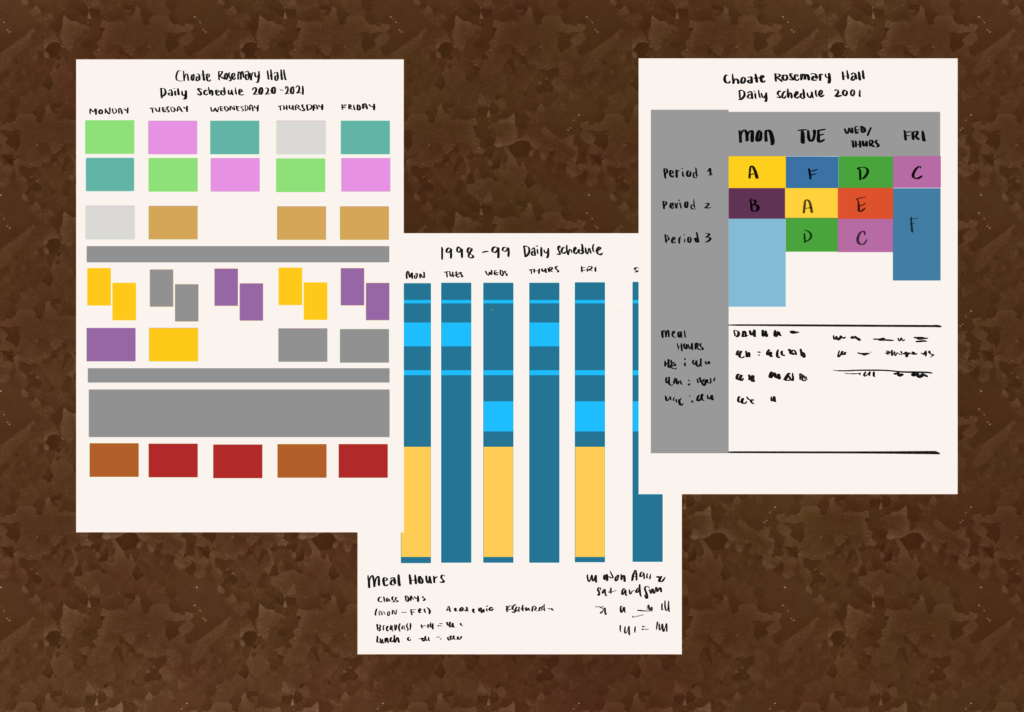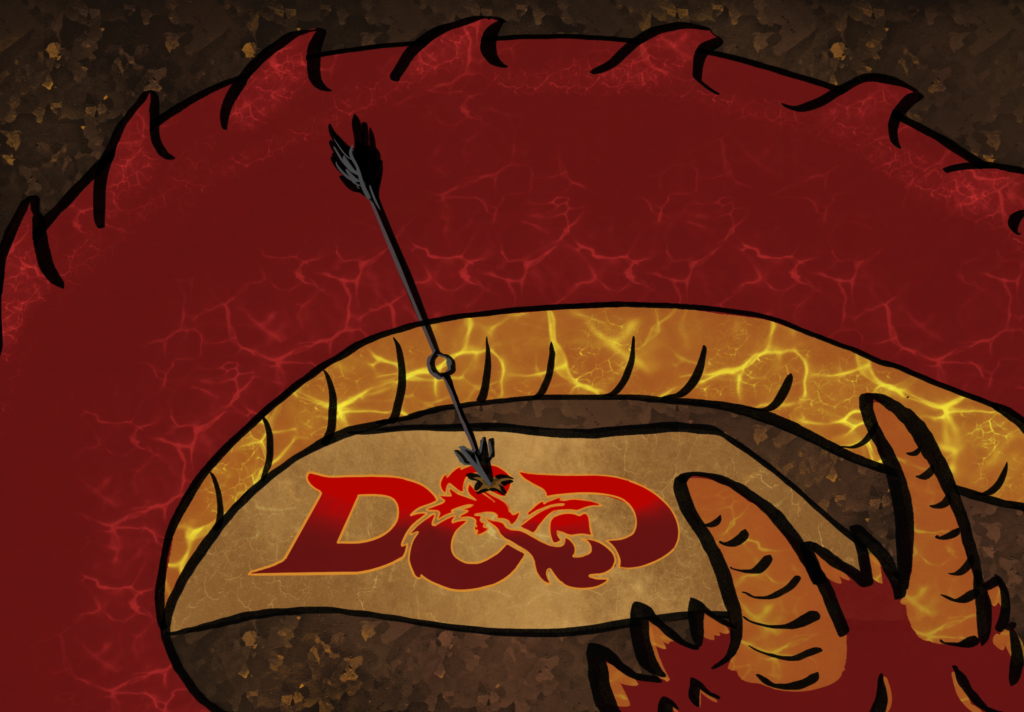By Sophia Liao ’25 and Reinah Lee ’26
Choate boasts 12 active student publications covering topics from science and engineering to identity and satire. This is Part 1 of the ultimate guide to all 12. Whether you’re an aspiring artist or a driven scientist, all students are welcome to submit a piece of work to any of these publications.
1. The Lit:
Short for The Literary Magazine, The Lit has been a long-standing platform for creative writing since its founding in 1914 at The Choate School, before being joined by Rosemary Hall in 1972.
Originally devoted to creative writing, The Lit has since evolved to include artwork, photography, and QR codes to skits and musical compositions. The Lit welcomes both seasoned creators and those who are still discovering their creative outlets. In their biweekly themed meetings, attendees make vision boards for the new year, blind draw their friends, and create art to submit to The Lit.
Submissions are always open, with options to submit anonymously as well. All submissions are voted on by members of the club to “make sure that we’re publishing what people actually want to see,” Editor-In-Chief Cassatt Boatwright ’24 said.
One of the goals of The Lit is to drive up submissions and engagement, especially through the termly Lit launch parties in the Student Activities Center (SAC). Students can get involved with The Lit through submitting a piece from Drawing 100 or attending their winter term launch party on February 23.
2. Lorem Ipsum:
Known for its light-heartedness and ability to make its readers laugh, Lorem Ipsum headlines its paper with its motto, “Don’t believe a thing we say.”
Launched in 2015 by James Rose ’18, Lorem Ipsum is Choate’s only satire publication, which aims to provide a humorous perspective on student life while discussing and critiquing it.
Since its founding, the publication has undergone some changes. “I think maybe we’ve generalized a bit and started talking about general Choate life instead of making fun of specific events,” Editor-In-Chief Chen said.
With goals of publishing high-quality issues consistently and upholding the cheerful spirit captured in past issues, the masthead of Lorem Ipsum hopes its writer and viewer base will increase. Chen is looking forward to hosting events, such as launch parties, and wishes to collaborate with other clubs and publications on campus to aid with the involvement.
“Lorem Ipsum is unique in that it contrasts many other publications on campus with its non-serious tone and use of satire and comedy,” Chen said. “I think that including things like quizzes and silly articles makes it easier for potential writers to approach the publication and write for it, spreading its lighthearted reach.”
Lorem Ipsum is looking for writers with a creative spark and the willingness to brainstorm outside-the-box ideas. Writing skills and the ability to meet deadlines are appreciated, but most of all, a love for laughter is needed.
3. The Choate Inquiry:
The Choate Inquiry, overseen by Co-Editors-In-Chief Katherine Chong ’25 and Will Colasanto ’24, addresses controversial topics in the form of side-by-side pro-con articles. “What distinguishes The Inquiry is that there’s a focus on contemporary political issues,” Chong said. “I think that healthy discussion and opposing viewpoints instead of reaffirming the same beliefs are helpful for intellectual diversity.”
Recently, their most notable topics have included discussions on banning pornography, legacy admissions, and affirmative action. “The publication is more daring and has less restrictions on the topics that we discuss,” Chong said. “The whole point is to break through echo chambers on campus.”
The publication releases termly issues but seeks to solidify its editorial process. Plans include setting up an archive system, establishing editorial guidelines, and introducing thought-provoking topics. The masthead is searching for writers with distinctive voices and the ability to confront difficult topics.
“I think our masthead brings together people that usually might stand on opposite sides of the political spectrum, or have completely different identities, which is something I appreciate and want to continue into the future,” Chong said.
4. SciTECH:
Established in 2016, SciTECH (science, technology, engineering, culture, and hacks) is a platform for promoting science on campus. Pick up a copy of SciTECH to read up on Google’s LaMDA AI model, recent developments in NASA’s Artemis Program, or Alzheimer’s disease’s connection to sociology and neurology.
Managing Editor Isabella Wu ’24 hopes to expand the depth and breadth of the topics by allowing writers to choose their own subjects. “I really value student opinion, so having that option for people to come up with their own topics [allows] for more diversity.,” Wu said. With an emphasis on student research, SciTECH is working to publish Science Research Program (SRP) and Environmental Immersion Program (EIP) features in a coming issue.
Published once a term, SciTECH is looking for writers who are strong communicators and are excited about science and its potential to shape our future.
5. Voices Magazine:
Voices Magazine was founded in the 2020-2021 school year by Emma Hermacinski ’22 to uplift LGBTQ+ voices and discuss LGBTQ+ issues.
“As the only identity-based publications on campus, it’s very freeing to be able to represent the LGBTQ+ community,” Editor-in-Chief Gigi Chen ’24 said. Many of the articles are journalistic, but creative submissions are also welcome. In each biannual issue, expect to find a mix of queer media critiques, personal poetry, pride-themed music playlists, and queer news.
6. The Artist:
Rooted in its mission of promoting diversity, identity, and culture, The Artist is a fluid space for anybody to unleash their creativity through any medium.
When founded in the 2021-2022 school year by Abby Lu ’22 and Audrey Kaye ’22, its purpose was to promote its mission solely through visual art. However, that shifted last year when the editors began accepting music, writing, and multimedia. In the fall issue this year, The Artist experimented with having the head editors annotate submissions related to identity to foster community.
“The whole point of the name is that anyone can be an artist and that art comes from embracing our identity and culture,” Editor-in-Chief Mikayla DaSilva ’24 said. “We’ve had a lot of interest from younger students — third-formers — which is really affirming that the direction we’ve taken is the right one.”




